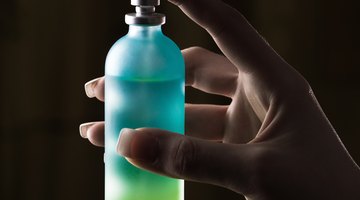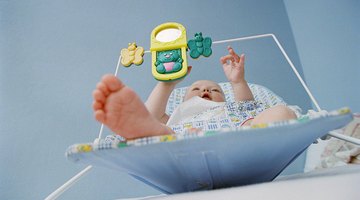Is Flame-Resistant Clothing Safe for Children?
A child's welfare is of utmost concern to his parents, and choosing safe clothing for sleep is no exception. Though flame-resistant chemicals may be found in many products, including carpeting, crib mattresses, changing table pads, nursing pillows and car seats, they are particularly prevalent in children's sleepwear. Careful research and thorough inspection of the labels on children's clothing can help parents make informed decisions and safe choices concerning their child's bedtime apparel.
Sleepwear Safety Standards
The U.S. Consumer Product Safety Commission defines children's sleepwear as any clothing item, including pajamas, robes, loungewear and nightgowns, sized for children 10 months of age to size 14 and intended for sleeping or sleep-related activities. Tests are conducted on fabric using a gas flame. Clothing items are accepted, rejected or retested depending on the length of the char left on each fabric sample. A char length of 7 inches or greater indicates that a particular fabric is not suitable for production based on its flammability and will be discarded. The CPSC requires child clothing manufacturers to comply with their standards for flammability testing before they can release their products to the public as flame-resistant sleepwear. To avoid injury, clothing that has not been chemically treated with flame retardants must fit a child snugly and carry a label that indicates a lack of fire-retardant chemicals.
Chemical-Free Cotton

Side Effects of Steam Vaporizers
Learn More
According to the CPSC, loose-fitting sleepwear made of cotton or cotton blends is associated with 200 burn injuries every year. Studies performed upon clothed mannequins showed that existing airspace between the untreated fabric and the subject's skin increased the flammability of the clothing. The American Burn Association states that, in 1996, the CPSC voted to allow the use of cotton in children's sleepwear with the stipulation that the garments fit snugly. The decision overturned a 1972 requirement that all children's pajamas, nightgowns and other sleepwear be made of flame-resistant materials. Since 1996, however, Shriners Hospital for Children has reported a significant increase in sleepwear-related burns.
Health Risks
Consumer Reports indicates that flame-retardant chemicals used in children's clothing are required by the CPSC to be nontoxic, but manufacturers are not required to label chemicals they use, if they use any at all. Chemicals commonly found in children's pajamas are halogenated hydrocarbons, such as chlorine and bromine, inorganic flame retardants called antimony oxides and phosphate-based compounds. These chemicals can create gas in the air that children breathe and irritate the child's skin. Synthetic polyester fabrics are manufactured with chemically inserted fire retardants. Because the fire retardants are a part of the polyester's molecular composition, they are stable and not likely to harm children. Due to the poor breathability of the fabric, however, children may be prone to overheating and rashes.
Safe Sleepwear Choices

Are Non-Toxic Children's Paints Harmful if Swallowed?
Learn More
According to the Toxics Information Project, parents who are concerned with avoiding chemicals altogether can choose to outfit their sleepy children with fitted cotton sleep garments bearing the label "Wear snug-fitting. Not flame resistant." These long-john or union-style garments are environmentally safe and comfortable for children while complying with the CPSC standards for children's sleepwear. Parents opting for fire-resistant fabrics can choose flame-resistant polyester sleepwear with flame retardants bonded to its polymers.










